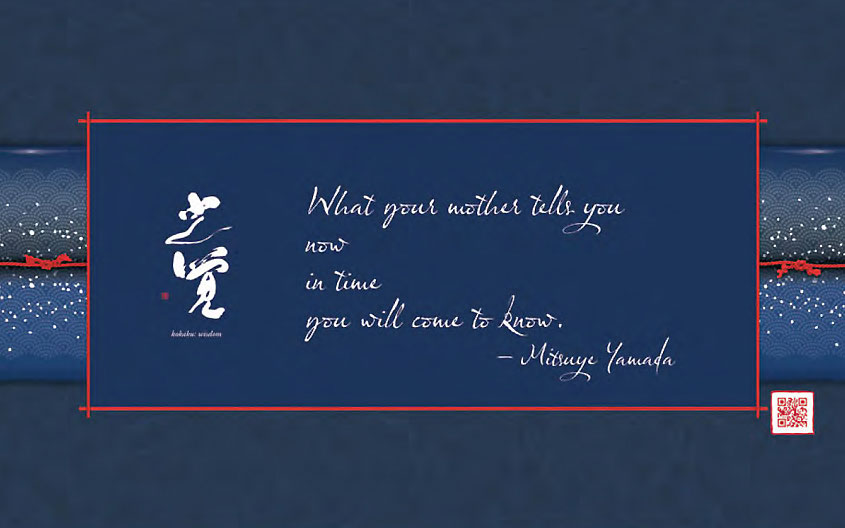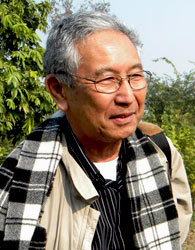


The Japantown Mural Project is a celebration of the vibrancy of San Jose's historic Japantown neighborhood through artworks by 50 local artists.
The environment is a barren, undeveloped plot of land that once served as the City of San Jose's Maintenance Yard. Chain-link fencing is now covered with more than 60 large mesh panels of color.
It stretches a quarter of a city block along 6th and Jackson Streets in the heart of Japantown.
The subject matter is highly interpretive, including personal and commissioned works, and encompasses a wide variety of mediums and aesthetics. It also includes references to the site's former life; 100 years ago,
it was one of San Jose's very first Chinatown settlements known as 'Heinlenville.' A majority of the artists maintain art studios in Japantown, have displayed their artwork in neighborhood galleries, or consider this wonderful place their home.
The Japantown Mural Project is truly representative of its own unique community and will be enjoyed and appreciated for years to come.



The Artwork
Formless-form: the art of sho
The art of sho (calligraphy) is concerned with the beauty of the human spirit and realization. The task of the sho artist is to give form to his or her aesthetic/spiritual experiences. It is an undertaking for anyone who has discovered a new landscape and who wishes to communicate where he or she has been and experienced. Lord Buddha’s meditational explorations led to the sighting of a heretofore unknown spiritual realm that is crystallized with the expression “pratityasamutpada.” As a verbal metaphor for a living reality and its topography, pratityasamutpada enables those who have yet to sight this rarified region to imagine an inexpressible, inconceivable, and formless sacred geography. Such an experience remains known only to the adventurer, until he or she can intelligibly report what is seen and felt. Fashioning an appropriate word or suitable metaphor, symbol or descriptive concept through which the unknown can be made comprehensible is most a creative activity. Expressing truth is, of course, not limited to language or doctrines, but can be conveyed through form and color, sound, movement, and touch, mediums exploited by the creative arts. These non-verbal, often a-rational expressions re-imagine, enrich, and give color (form) to aesthetic and spiritual insights. Operationally, the artist intuits “original images”—primal and elemental experiences—and gives these formless experiences form.
The formal beauty of space and line appears when the soft and pliable brush, free flowing ink, and absorbent paper converge in perfect harmony. True beauty however issues forth when the sho artist gives form to his or his or her formless kyogai or “spiritual-dwelling-place,” a fullness for and capacity for life that comes from long experience in living. Only at the age of sixty did the Japanese Zen cleric Hakuin Ekaku (1685-1768) offer tantalizing glimpses of his “spiritual-dwelling-place;” and only after the age of eighty does his sho demonstrate his profound and authentic kyogai. The study of sho is an opportunity to explore the potential and limitations of the craft; and through this exercise to cultivate and give form one’s formless kyogai.
Biography
Ronald Y. Nakasone is heir to the age-old East Asian literati tradition that encourages self cultivation, self transformation, and self realization through scholarship, community involvement, and art. A student of avant-garde Japanese sho (calligraphy) artist Morita Shiryu (1912-1998), he has exhibited in Kyoto, Tokyo, Paris, Seoul, Xian, Chiang Mai, and throughout the U.S.A, including Hawai’i. His works are in the permanent collections of the Mobile Museum of Art, National Museum of Fine Arts, Havana, the Graduate Theological Union (GTU), Chiang Mai University, Ekoji and Shokakuji Temples in Japan; and in private collection in Japan, Okinawa, Thailand, Spain, and the U.S.
Professor Nakasone is a member of the Core Doctoral Faculty at the Graduate Theological Union (GTU) in Berkeley, California and a faculty at the Stanford University Geriatric Education Center. He has published more than 100 academic books and articles on Buddhist doctrine, ethics, and aesthetics, Aging and Spirituality, and Okinawan Studies. Students and colleagues contributed essays to Memory and Imagination, Essays and Explorations in Buddhist Thought and Culture (Nagata, 2010), a festschrift that commemorated his completion of one life cycle (60 years) according to the Chinese zodiac. He received the Sarlo Excellence in Teaching Award from the Graduate Theological Union in 2011.
Japantown Community Congress of San Jose · Office of the Consulate General of Japan · Wesley United Methodist Church
Jack's Bar & Lounge · Dr. Stephani Nguyen of Japantown Dental · Kay's Shiseido · Dr. Jerrold Hiura & Lucia Cha
Contemporary Asian Theater Scene · Japantown Neighborhood Association · Union Bank of California · Chris & Minako Tsuji
Japanese American Museum of San Jose · Yu Ai Kai Senior Center · Banana Crepe · Halcrow Partners · Pan Pacific Bank · Alex Alsorady & Darcie Kiyan
Sophie Horiuchi Forrester · Helen Hayashi · Roy & PJ Hirabayashi · Aggie Idemoto · Reiko Iwanaga · Jeanne Katsuro · Tamon Norimoto · Kristin Okimoto
Jeffrey Oldham · John Ristow · Rev. Gerald & Kathy Sakamoto · Victoria Taketa · Leah Toeniskoetter · Joe Yasutake
Japantown Community Congress of San Jose · The City of San Jose Arts Commission · Dr. Jerrold Hiura · The Rast Family
Corinne Okada Takara · Ruth Tunstall-Grant · Cherri Lakey · DJ Ashford
Empire Seven Studios · The Arsenal · Sign-a-Rama of Downtown San Jose
site by rasteroids design
website design & development